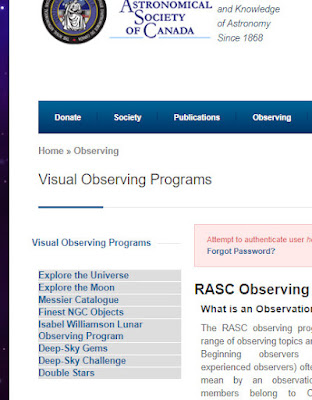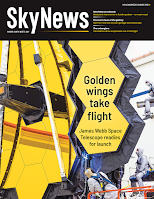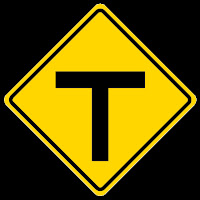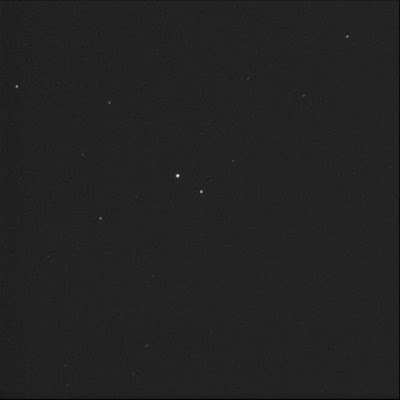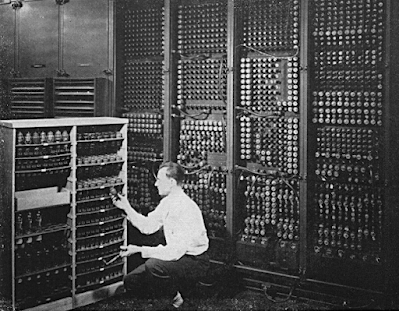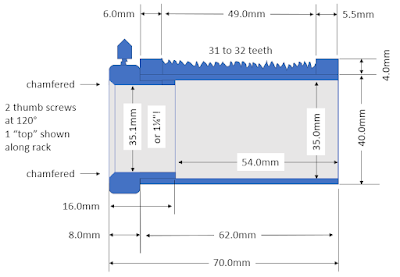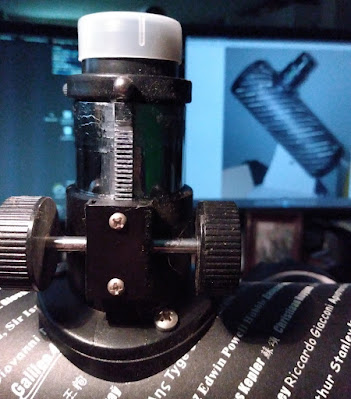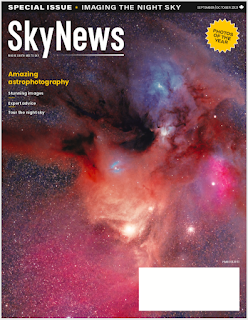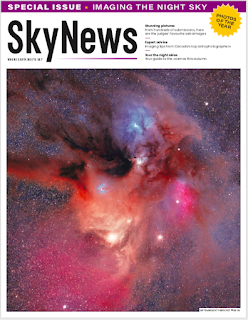Wednesday, December 15, 2021
Wednesday, November 24, 2021
in the end
§
Today was pivotal.
I sent a formal letter to the RASC Toronto Centre. We'll see what happens...
My blood pressure is high.
My doctor is concerned.
Clearly, I need to chill.
Astronomy is good. In many ways. And under normal circumstances it makes me calm. That's a feeling I often experience when I look at things through the telescope: calm. Extreme, deep calm.
The Universe slowly churning away, spinning, evolving, and letting us have a look around. Developing our theories and insights and rules.
I will endeavour to find some time under the stars. That's what matters. That said, it's hard this time of year. But I continue to closely watch the Clear Sky Charts...
In the end, there's no reason to be mean or vindictive or hold a grudge. But some hold grudges. They MUST win. No matter what. But they don't get it. Funny/odd when astronomers don't understand that. There's NO, zero, point in fighting. 'Cause you're gonna die, sooner or later.
Friday, October 15, 2021
avoid these terms!
But on skimming today's article on curious comet 29P/Schwassmann-Wachmann, I grew a little anxious. I hope this does not spurn other media outlets with phrases like "giant space volcano" headed towards Earth or comet in "superoutburst" ligthing up the whole sky.
Oh oh...
Tuesday, October 12, 2021
Stellarium webinar tomorrow
Monday, October 11, 2021
registered a gaggle
still can't edit
reviewed a .STX file
Sunday, October 10, 2021
still locked out
And the problem is cascading into centres. In Toronto, we cannot edit our site nor perform other member services. What a... mess. Absolute mess.
cut a circle
Friday, October 08, 2021
free webinar on Stellarium Oct 13
See the information page on the Toronto Centre web site.
This is a webinar aimed at people interested in the Stellarium software, either completely new to the software, or with some limited exposure. I.e. beginners.
The Zoom webinar size is limited to 100 people.
Send a message to stellarium AT rascto DOT ca if you'd like to attend.
Thursday, October 07, 2021
had a quick look at Stellarium
Saw what Chris saw: the Bookmarks feature is re-jigged. Or rather, bookmarks are gone. Now there is the "Observing List" feature...
There's something different about the location settings, I think, maybe? Subtle labelling.
Overall, looks similar.
used the smartphone
The image looked good when done and was an odd dimension of course, 9400 pixels by 1700 pixels, approximately. It took me a few tries but I got it work. With GIMP, I produced a 4096x2048 PNG with transparency. Hacked the INI file. It all worked.
So a good review in the end as I had forgotten a few of the particulars. Touched up my notes in the Advanced Stellarium Quick Reference Card. Prepped sample files for training. Proof of concept met. And I'm better prepared now for my upcoming level 3 training rehearsal with the Stellarium team!
no activity for the second day in a row
the focuser is ready
Wednesday, October 06, 2021
wasn't me!
Ooooh. Maybe that accounts for the radio silence today...
asked if we can hide it
no stars (Bradford)
coached on list-making
reviewed a viddie
no replies
There are a lot of members in the lurch here... it's not just me.
skimmed SkyNews
redid the tube
After a lot of tests and trials of OpenSCAD and MeshMixer, I had a rethink. I believe it was during my catch-up chat with Ward, while trying to demystify meshes and solids, that I decided to redo Alister's focuser tube from scratch in TinkerCAD.
Not trivial. Took me some time, some YouTube videos and 3D design tutorial pages, to learn The "Tinker" Way of doing things.
This is version 1. Overall it's good but I want to redo the tube.
The inner threads don't look deep enough. I need to make the cutter 1 mm bigger I think.
Also the edges of the tube are not chamferred. I didn't think this possible in the new tool but I learned today how to do it.
Tuesday, October 05, 2021
the last SkyNews of 2021
Eric Klaszus shared his meteor hunting adventure.
Nicole Mortillaro discussed cold weather observing.
And Dan Falk wrote about the new James Webb Space Telescope.
Oh yes. And many geek out on what they'd like Santa to put under the tree or in the stocking...
Once again I am liking the new cover design.
See the snippets online.
made some lists for motors
Need to double check if we have all the supplies on site.
a special meeting
T-2w
Monday, October 04, 2021
getting consensus
off the hook
invited to speak at Sarnia
hacked the code
Sunday, October 03, 2021
copied the bolt code
It worked.
I copied the code available from the Thingiverse Nut Job Customizer and dropped it into OpenSCAD.
Woo hoo! The Customizer populated and then the bolt appeared. Yes! No errors. It's... it's incredible. 639 lines of C-like code.
Sidebar: I'll be able to make other fasteners for 3D printing with this tool... Or hack the code of my 3D models... Interesting (said in my best Mr Burns voice).
This is brilliant. I need to generate a very large bolt pattern with a 1mm thread pitch for Alister's focuser tube and the Customizer inside Thingiverse is broken.
It seems many things are broken in Thingiverse...
Now that I have OpenSCAD 64-bit on the Windows laptop, I'll be able to make the part to import into my 123D project.
Well. I'll be able to do that when STUPID WINDOWS 10 stops thrashing the hard drive!
COME ON!
Guess I'll do this in a few hours... stupid stupid stupid!
Hey, Microsoft. Your operating system IS a virus.
worked the numbers
learned how it went
pitched more peeps
viewed the new config
Great shots show the new configuration of the canted Redwire solar panels plus the recently-added Russian Nauka lab module.
The photographs were captured by Pyotr Dubrov from his Soyuz before returning to Earth.
The excellent shots show the exterior of the ISS from a few hundred metres. Been a while since we've seen some good beauty shots. There are two SpaceX Dragon spaceships and a Northrop Grumman Cygnus supply craft docked. I particularly enjoyed the view of the lab’s new roll-out solar arrays.
Saturday, October 02, 2021
learned the parts separated
I was starting to wonder what had happened. Hadn't heard from him for a while about his Celestron First Scope focuser tube issue.
Had he dropped off the edge of the Flat Earth...?! Did he not care any more? Had he thrown the whole telescope in a big round bin? Had he found someone nearby to help? Had he bought the replacement part from Celestron? Ha ha ha ha ha ha ha ha ha ha ha ha... oh... ha ha. That was a good one!
I was rather pleased to hear from him. He shared that he had finally discovered the misplaced parts. Two different boxes, he said. He included some measures.
The best news was made abundantly clear in the attached photo.
The focuser tube was a two-part item! Yes!
I immediately took mine apart. Easy. Look at that!
A whole bunch of problems went away, dissolved with this photo. The tube part proper, it's construction in a 3D model tool, now got a lot easier. Alister would not have to drill and tap a collar piece. That he found his meant I didn't have to do anxiety-inducing exploratory surgery on mine (although it probably would have been moot).
Measured the outer diameter of the threaded part of the collar with my trusty ole' micrometer, twice: 35.5 mm. Double-checked the inner diameter of the tube: 35.0 mm.
I could now finish the 3D design... Onward and upwards.
check out all our events
checked a double sketch
connected!
the good, the bad...
The good: her Explore the Moon certificate and pin had arrived, at last, after 69 days! Whew.
But then she said, "Any chance of me getting a certificate with correct spelling of my name."
Oh my Universe.
After all that!
It is still not right, 69 days in...
Kinda kicked the pegs out from under me.
Friday, October 01, 2021
made new app forms
conflicted
I truly don't know which way to go. There are only a few people who can do, or are willing, this.
reviewed the by-laws
relayed the EPO call
relayed DDO ask
Thursday, September 30, 2021
used the new checkers
made another checker
that ends well
Wednesday, September 29, 2021
noted clouds (Bradford)
showed how to use the web interface
trained new staffer
updated the checker
This completes the work on Mirrored version. Now onto the Rotated one...
Tuesday, September 28, 2021
attended a planning meeting
another council meeting
met with E.D.
Monday, September 27, 2021
sent apologies
asked to be removed
CAO information to review
notified of council meeting
Sunday, September 26, 2021
switched pants
Comfy.
put on socks
did some training planning
Saturday, September 25, 2021
we got lucky
late checkout from DDO (Richmond Hill)
I headed down in the late afternoon so to have a good amount of time to set up and prep, feeling a little rusty, and wanting to work on my own. Quite cloudy during the trip down. Maybe this wasn't going to work...
Then some slack time.
When Denise arrived, I had the dome open, cooling fan running, Stellarium running, adapters out, Visitor eyepiece ready, finder MallinCam going, my laptop John Gomez going, my new USB headset at the ready, sidereal time set, upper door open (after some persuasion).
Received Andrew's MallinCam Universe.
The skies were perfectly clear!
Targeted Saturn quickly but the camera image was breaking up. As I tried to sort things on my work, I was awarded a BSOD for my efforts. With about 30 minutes to go. Stress I didn't need. While I waited I fired up the DDO ASUS laptop but neither Denise or I could remember how to log into it.
Finally Win 10 came back and all was well. Received the VDO Ninja information from director Andrew. And suddenly I was on, talking about Saturn, the second largest gas giant in our solar system.
Rick and Claudio and Ron took turns talking through the evening.
After Saturn I headed to Albireo. When I sat down and put my headphones on, they were transitioning to me. Yikes. Wasn't ready for that. So I quickly found my notes and talked about double stars.
Then I went to Jupiter with the 23 ton telescope. And was ready when they tossed the football to me.
Took an audience question.
And then I was done. There was some talk about me doing another target, beyond what was scripted, but I suggested others should show things. Even Ward was able to share an image, his comet C/2020 F3 (NEOWISE) shot from the summer of 2020.
This gave me time to work on the DDO portable computer. Got logged in. And discovered the MallinCam Universe software had never been installed. So I did a near-field Bluetooth transfer of the control app and the driver. Swapped out my computer for the RASC unit and connected successfully to the camera.
I tried viewing τ (tau) Cygni.
When the show wound down, the lads from the lawn came up to celebrate and do some quick training and refreshing on the 74-inch.
Claudio in particular wanted to try his cameras. We spent a lot of time experimenting.
During this, I tried to improve the focus of the finder scope with its MallinCam. That worked, the Ring Nebula obviously improved on the TV monitor. But as I locked down the focuser, the little refractor moved in the ring holders. I spent the rest of the evening trying to realign it. Frustrating. I still think its off so I'll have to revisit that...
Denise and I closed out the dome at 2:42 AM.
I gave her the my 3D model of the telescope printed by Steve. She was thrilled.
Seat of the pants, tonight. But Denise was happy. First time I went to three different targets in the same show!
Wow. Long night. Home after 3 AM.
Thursday, September 23, 2021
checked Teflon
Three pieces. The long rectangular is 3/8"; the two squarish pieces are 1/4".
- 15-3/8 x 3-1/4
- 7-3/8 x 4-3/8
- 8 x 5-7/8
I can now finish my Dobsonian base build...
And fix the big Dob from the DDO.
to fly the 74
See the RASC Toronto Centre web page for more information.
There are still tickets availalbe at the Richmond Hill web site.
Sorry! Registration is closed.
Wednesday, September 22, 2021
plus 10k
My barn door tracker YouTube video has over 10 000 views!
That is so wild.
not again!
The upper level can be booked by one party.
the terrifying Universe
She took my question. I asked if she had a Flying Spaghetti Monster bumper sticker on her car.
She didn't. But she wants one.
received October Journal notification
Aurora on the cover. Aurora prediction software in my column.
Katrina discusses star culture in a colonised world. Dave C talks about seeing gegenschein in a peculiar spot. John acknowledges CASCA's 50th year. David L looks back on Carolyn Shoemaker's life.
My Binary Universe column is about one of the better aurora monitoring apps, Solar Monitor, for the iOS platform. Not perfect and a little pricey but helpful with an information-packed main screen and timely notifications.
§
The Journal or JRASC is available to the public. Download it now. Enjoy!
Monday, September 20, 2021
taught Stellarium intermediate
imaged STF 2146 faster (Halifax)
Luminance only, 0.1 seconds, 12 subexposures. FITS Liberator, GIMP.
Caught it in stunning conditions...
Well... I don't think AB is round.
This is the shortest value allowed with the BGO rig. So I cannot shoot any quicker. That's it.
§
WDS entry updated! There's no B. The tight companion is near C. See the 29 Aug '21 blog entry for details of the change.
Sunday, September 19, 2021
posted Sep '21 doubles list
§
School's back in, sorta. Summer's over, sorta. One thing for sure: the Moon is back, big and bright. And that means you need to shift to planets, variables, and double stars.
Here's a short selection of doubles and multi-star systems from my life list, ones I find impressive and interesting.
| star | also known as | alternate catalogue(s) |
|---|---|---|
| β Cap | ΣA52, Dabih, 9 Cap | SAO 163481, HIP 100345 |
| ε Equ | Σ2737, 1 Equ | SAO 126428, HIP 103569 |
| HD 177904 Aql | Σ2449 | SAO 124265, HIP 93822 |
| HD 203320 | S 786 Cyg | SAO 33323, HIP 105298 |
| V402 Lac | HJ 1735 | SAO 51698, HIP 109354 |
learned of the second!
Saturday, September 18, 2021
made a new calculator
It's pretty snazzy.
Onboard instructions and notes.
Constants sheet for the Earth's rotation rate and the sidereal time factor.
Supports variable Linear Scale divisions, say 50 or 60!
Prompts for a dozen drift times, taking the average.
Prompts for the star's declination, so to compute the speed of the sky.
With that, the Scale Constant can be determined (per my proper formula).
Supports four scale constants with and without magnifiers and reducers.
Finally, prompts for double star pairs and their separation in tick marks on the Linear Scale.
Computes the true separation or ρ, rho for a dozen pairs.
Hope they like it...
helped Bruce and Melody
Friday, September 17, 2021
did some math
I started a round of research to learn or verify how to measure double stars with the Meade Astrometric ocular with its illuminated reticule and its central Linear Scale with 50 divisions.
My experience is with the Celestron or baader planetarium Micro Guide (now discontinued) with 60 divisions.
I had a bad feeling that my method and separation calculation would not work. I wanted to help Melody learn how to use hers but feared my technique would not apply.
"Let's start from scratch," I thought.
Did some broad internet searches.
Landed in a Cloudy Nights thread started by Jeremy Perez no less. He was trying to learn his Meade Astrometric eyepiece. Perez developed his external protractor. People recommended Tom Teague's method and Bob Argyle's book. But in the end, it didn't reveal to me a formula.
Then I found a thread in the Stargazers Lounge. Davey T asked how to use his Meade (though he showed a reticule image for a Celestron) back in the spring of 2015. William aka Oddsocks gave a procedure referring to a star at zenith. A day later he backtracked. On reading Qualia's notes for a Micro Guide, he realised his instructions were wrong. But he had simply relayed the notes from Meade.
It is strange how you read something from a "respected" manufacturer and believe it must be correct... I realised the published linear scale calibration method in the Meade document is garbage!
Oh my.
The Meade document is useful in other details but the linear scale calibration method can be ignored unless you are living on the equator
So I still did not have a formula.
But now I was getting more nervous for Melody's sake.
I read Qualia's blog post on measuring doubles and Jovian moons with the baader Micro Guide. Some pretty good notes.
Finally, I found a formula for calculating the drift’s scale constant.
S.C. = 15.0411 * T.avg * cos(Dec) / D
where:
- S.C. - Scale Constant
- 15.0411 - Earth’s rotation rate per hour in degrees
- T.avg - the given star’s mean average drift time
- cos(Dec) - cosine of the star’s declination
- D - number of division on the linear scale
I compared this to my formula:
ρ = D * T.avg * SidFact * cos(Dec) / 4
where:
- ρ - separation in arc-seconds, rho
- D - divisions or ticks on the LS, in decimal form
- T.avg - average drift time in seconds
- SidFact - sidereal time factor or 1.0027379
- cos(Dec) - declination of the star, in decimal form
Some marked differences that unnerved me. Oh boy.
Couldn't seem to find the source for my formula...
Still, there seemed to be something going on here. I could not see it at first... But after a lot of head-scratching and noodling and staring and some home-made spiced rum, I realised what it was.
The 15 (and change) value divided by 60 divisions gave 1/4 (close enough from an aeroplane). That was what I was using in my formula! Whew. They were essentially the same. That was a big relief. So I made a new universal formula considering everything.
S.C. = ( RotRate * T.avg * cos(Dec) * SidFact ) / D
And then you multiple that by the counted ticks on the scale to get ρ, of course.
I really like this new formula since it will work with any reticule regardless of the divisions and as it integrates the sidereal time factor too, which I also cross-checked.
That's produced by dividing 86400 (regular day in seconds) by 86164.0905 (a sidereal day in seconds).
Relieved.
Along the way I could not find an official PDF on the Meade site for the ocular. I could only find it on one of those suspicious manual sites...
But I finally saw it with my own eyes. Step 4: Aim the telescope at or very near (within +/- 5°) the zenith (perpendicular to the ground).
Later they said to take three timings. Ugh. More bad advice.
And there it was in writing, after the step-by-step procedure. Stars at or near the zenith move across the sky at 15 arc seconds per second (sidereal rate).
No. Wrong. Completely wrong.
Wow.
Oddsocks had called it. The true separation formula provided, ( T.avg * 15 ) / 50, would only work for observers at the equator.
So, again, the formula I made should be used:
S.C. = ( RotRate * T.avg * cos(Dec) * SidFact ) / D
This tells you how much real sky is between the tick marks on the Linear Scale.
Sorry. More work. And some trig. Sorry! But you'll get rather accurate results. I tested it in Stellarium with the Meade reticule view.
§
In follow-up messages with Melody, I learned that the instructions in her eyepiece box were like the ones I had stumbled across. New eyepiece from a 2021 sale with old bad instructions. Wow. It's amazing to me is that after all these years Meade hasn't fixed it or issued new information. Terrible.
content for NOVA
tried rho Ori in a small 'scope (Bradford)
The plan was to spot the B companion to ρ (rho) Orionis, while I had a clear patch. I was concerned the double, in the new observing certificate program, might be too difficult for an observer with a small instrument.
But I saw it.
It was challenging to be sure in the Meade ETX 90mm.
But it was definitely there.
With the Tele Vue 9mm Nagler Type 6, it was well beyond first diffraction ring. It was even visible in the old Celestron Plössl 26mm eyepiece. Detectable. The best view was with the Pentax wide view 20mm ocular.
Delicate.
I spotted C too.
B was to the EEN or EEEN, opposite HD 287611, very tight, much dimmer.
I viewed this double a bit before the meridian. Star hopped from Bellatrix.
Pleiades up high.
Winter is coming.
Tempting to continue but... I was too tired.
I thought rather good seeing, average trans. But damp. Very humid. The grass was wet.
Pulled the Clear Sky Chart. Cloud cover: clear; transparency: above average; seeing: excellent; Moon: -22°.
Pulled the weather data from EC. Current Conditions. 11°C. Observed at: Egbert. Date: 5:00 AM EDT Friday 17 September 2021. Condition: Not observed. Pressure: 102.2 kPa and falling. Temperature: 11.3°C. Dew point: 10.8°C. Humidity: 97%. Wind: ESE 4 km/h.
Wednesday, September 15, 2021
suggested peeps
heard the reticule eyepiece arrived!
That was quick! From the UK.
Then she said, "Now to learn to use it!" Indeed, I encouraged her to watch my double stars measurement video...
But then I had a sinking feeling! Would the formula in my video and companion notes work?! The Meade as 50 divisions in the Linear Scale while the Celestron/baader has 60. Oh oh. I had a feeling that would affect things.
This kicked off a round of research...
Tuesday, September 14, 2021
heard of the successful test
checked the alignment
Checked in SkyTools 3 (manual) and 4 (auto).
checked another vid
shared a thin design
processed trainees
asked for a DDO account
fielded a query about a Moon photo
This time the person felt that in a photograph of the Moon they captured a shadow cast from another planet.
Um...
I offered to look at the photo.
Unfortunately it was a shakey, hand-held, zoomed out, out-of-focus, low resolution, overexposed shot from a smart phone and saved in JPG.
Just an artefact, I argued.
Keep trying.
the very first one
chatted with the chair
Monday, September 13, 2021
rejected some members
relayed the good news
Harry from Uganda had found his Explore the Universe certificate and pin.
In fact, it had arrived on 8 April but the mailman never informed him!
Another loop closed.
proofed column
But Chris had my latest images. In his iPhone. In Richmond Hill. And he was at the CAO over the weekend. So I nudged Chris early Monday morning... A tad late.
I noted the wrong image was used for Figure 3. Sent it again.
And I provided an updated image for Figure 1.
Finally, I reworded some text in the Bits and Bytes section to be past tense.
picked up Teflon
Sunday, September 12, 2021
received more silica
reviewed her last observation
She said it took two early mornings to observe the B star... "very tiny, couldn’t see any colour..." Kept checking if she was on the right target.
I reviewed her notes and sketch for ρ (rho) Orionis, cross-checking in Stellarium on my Mom's Macintosh. Too bad SkySafari does not show it! Sheesh.
She got it!
At 40 degrees elevation, she viewed through 2 air masses. That said, the target at 45 degrees was about has high as it would ever get, for us.
The main issue with the dim companion star is that it is 4 magnitudes dimmer than A. So the primary star would overwhelm the view.
I also felt she tagged the C star in her sketch but pointed out it was the first one, not the second one, to the south-east.
It is a challenging target.
She made a remark about whether it would be visible in a small 'scope. I took that to heart. I only observation had been with a C14. I'd try with my 90mm later...
Her last required observation!
§
Checked the view in SkyTools.
All good.
Friday, September 10, 2021
in the line of fire?
Received a query from a person from the general public via the Observing Committee web page form.
Subject: identify rock/metal fragment
Err...
The person said they had found a small fragment of burnt metal/rock in their backyard lying on top of the grass and assumed it to be space debris. They doubted it was a meteorite because it wa relatively light. It was very hard and she could not break it. She wondered if it was from the fireball seen on August 22 from Crystal Beach.
I responded. I declined an offered photo. I shared a link to the University of New Mexico web site, into the Geology department. Encouraged her to read the information there. I also told her that if it really is from space, she should immediately protect the object from contamination by bagging it. I also suggested taking it to the geological or geophysics department of a local university.
more IT support
learned DSG history
Mike noted a change made to the list in the summer of 2020. The editor's note states that Levy 402 was introduced in place of Levy 226, however the numerical listing and detailed object tables both show Levy 226 present, and Levy 225 deleted. He did not see an update regarding this apparent conflict of information. He asked for some clarification.
Indeed.
I was pressed for time so I quickly acknowledged the receipt of his message.
Today, I followed up with a detailed reply on his interesting observation.
I shared with Mike that in late-July and early-August, I started a dialogue, with the editor and content owner. I had concerns with the Deep Sky Gems list. It was when I personally considered pursuing the DSG program and did a deep dive that I started to see a number of issues.
In fact, on 1 August, I pointed out this very matter, 225 was missing, 226 remained. And curiously this specific question had never been answered! I did do not know what was intended but guessed it a simple transcription error. The editor meant to say that 225 was replaced by 402.
I thanked Mike for drawing attention to this matter in the Handbook. It needed to be reported and noted in errata documentation...
Then I went on. I told Mike I was anxious about list changes occurring every year or so and I had raised the matter with the Observing Committee. Others were not aware that this was happening. In particular, I wanted to know if it was affecting him. I was concerned that if he was working through the observing certificate that periodic changes might throw off the member.
§
Mike replied and shared his experiences with the DSG program.
Since first approved, a total of fourteen objects have been changed. That was an eye-opener.
He recommended that changes in the Observer's Handbook be reported by the Observing Committee when they report to National Council so there is an official record. And be included in a RASC Bulletin. I absolutely agree. He noted that if the OC is not being informed of changes being made, they should be. Yes.
These changes challenged him since 2010.
He also noted the original introduction stated there was only one object that overlapped with any other RASC lists. As he worked on the list he found three additional duplicates, one with FNGC and two with Deep Sky Challenge. These were reported and subsequently removed and replaced with four new objects in the 2013 OH. Eight of the fourteen changes mentioned above.
He agreed with my comment that an observer could be thrown off if changes are not clearly communicated. It would be beyond frustrating to think one completed the list to only be told one had to observe new objects. Yes, exactly what I'm trying to avoid.
Finally, he noticed the PDF list on the web site was outdated. A to-do item for us.
All that said, Mike said that he was really enjoying this program and wanted it to succeed.
§
I thanked Mike again. I appreciated the fantastic historical perspective. It would really help me out going forwards.
Then I made my key point. I made it clear that the Observing Committee is NOT going to make an observer go and observe new things if they worked from an older list. He definitely would not have to redo anything!
pitched some training
he let me in
learned how to script
I pulled the B-V values for all the double star targets in my RASC observing program!
Earlier, I had built a spreadsheet with highly customised conditional formatting to show the B-V values with the cell filled with an appropriate colour.
Fun.
This will help as I compare all the colour impressions from the early adopters including Melody and Chris.
I've no doubt some of my colour descriptions are wrong...
Thursday, September 09, 2021
have you tried turning it off and on again?
He was not seeing the SSID for the network in the Geoff Brown Observatory. He asked if it needed a reboot. Nope. That unit died a while ago so no wifi inside the GBO. Hard line recommended.
He asked about the house wireless access points. They were only seeing the library and the furnace. What? I was surprised by that. The living room unit and the garage units (times 2) should be working. I asked for more information to get context. Like where he was located on the grounds.
In the kitchen. Then he shared that the house SSID was visible but not responding to the login. Authentication error or not connecting at all. Odd. I suggested he reboot the AirCube.
Wednesday, September 08, 2021
mark your calendar
helped with Q&A
returned to STF 2146 (Halifax)
It's a triple. AB are very tight. In Draco.
Luminance, 0.2 seconds, 20 subs. FITS Liberator, GIMP.
C is the obvious bright star to the south-west.
I don't think I can split A and B in this image. According to SkyTools 4, the PA is 225° with a separation of 2.70" (as of 1998). That angle is roughly the same as C.
The star west of A and north of C is J171259.2+540815 at magnitude 16.46.
First imaged this target on 25 Sep '18. Imaged again on 20 Sep '21, at a 1/10th of a second, oh, and with the SBIG sensor.
Is there a partner to C?!
§
WDS entry updated! There's no B. The tight companion is near C. See the 29 Aug '21 blog entry for details of the change.
pleased she agreed
received a list!
imaged IK Peg for 2021 (Halifax)
It imaged IK Peg for me again. Has it blown up?
Luminance, 2 seconds, 12 subs. FITS Liberator, GIMP.
I've been shooting this for three years now...
Captures, in reverse chrono order:
Looks the same to my little eye...
Tuesday, September 07, 2021
declined October TSTM
I had to decline. Too stressed right now.
Did let him know, however, that I had been working on the next double stars presentation, measuring again, but with a camera...
asked for spectral information
Explained I wanted to corroborate double star member colours.
Asked if I could list from the software stars with their spectral classification (when known, of course).
Author Greg said:
Spectral classification is a lost art, and it has little scientific use today. As a result, with a few special case exceptions such as WR stars, only the very brightest stars have spectral classifications. Because (B-V) colors represent the same color information and are available for much fainter stars, I chose to focus on the (B-V) color index. The spectral class is shown on the Object Info, by the way, but just isn't available for many stars. And fainter components of even the brighter doubles will often be missing the spectral class.
He suggested use the B-V data instead. It is more widely useful.
I assumed the B-V value shown in a list was for the primary star. He essentially confirmed that.
But he did remind us that if we select a component star in the bottom right part of the dialog, the B-V for the selected star will show in the Photometry section.
That was good.
But I moped that I could not pull the B-V data for the secondary and additional stars into a column in the app.
turned away another
Monday, September 06, 2021
started testing ST4V
clarified sources
helped with Zoom/Ninja
helped member out
Sunday, September 05, 2021
magazine for Mom
reviewed 2 log notes
I thought she made a lovely sketch of 19 Lyn. I saw she was getting better at directions in the eyepiece. I complimented her on her position angles. She nailed it on HR 1887!
But she reported forgetting to drink her early morning coffee!
Nooooo!
Saturday, September 04, 2021
asked about recognition
Spoke with some Toronto RASCals about land acknowledgements.
I thought it was a no-brainer but I'm wrong.
took a call from the VP
explained how to get a cert
I sent a response. Told him I was a member of the national Observing Committee for a number of years. Then briefly described the process. Said I was also happy to chat by phone or Zoom as it could be a big topic...
answered camp questions
Friday, September 03, 2021
dove into the OH '22
Found over a dozen issues...
Thursday, September 02, 2021
on it's way
Wednesday, September 01, 2021
how to proceed
without our knowledge
§
Later we learned of another!
Are there more?!
Time for a reset.
Just when I thought things were getting sorted...
§
It's disturbing that this only arose because the recipient did not receive the certificate in a timely fashion. Otherwise, this might have gone under the radar.
Obs Comm update issued
SCOPE newsletters provided
§
On the TC forums, I thanked the long time editor.
And the incoming editor!
Tuesday, August 31, 2021
tested spiral search
This is the latest version of my virtual hand controller for the IDEA GoToStar motor drive system.
Holy Universe, it works!
I thank Software Bisque for introducing me to the idea...
Monday, August 30, 2021
chatted about cool Vul double
to join CAO maint. team
provided MC notes
times two
caught up
learned of a driver
Arie B shared that he wrote an ObservingConditions driver to support various weather stations from Davis Instruments Inc.
Cool!
I just might have to try that...
Sunday, August 29, 2021
WDS updated STF 2146 data
Previously:
AB = 6.92, 8.80 2.8" 225° (2018) A9III
AC = 6.95, 8.87 89.3" 235° (2016)
Now (via Stella Doppie):
AC = 6.95, 8.87, 89.3, 235 (2016) CD = 8.87, 10.50, 2.8 , 225 (2018)
It seems the B is no more... Spurious or bad data early on and now deleted.
And it seems there's a companion at the C star, close in, 2.8" away. Ah.
That may explain why all my attempts did not reveal a B star close to A.
§
Did a big clean-up of the life list page. I found 2 copies, 3 entries total, for each of the pairs of Σ2146. Also, finally, put up the image from Sep 2018...
§
See images from:
- 25 Sep 2018 - ½ second, Apogee
- 8 Sep 2021 - 0.2 seconds, Apogee
- 20 Sep 2021 - 0.1 seconds, SBIG
Friday, August 27, 2021
exciting JWST update
Read the NASA article on the completed testing for the James Webb Space Telescope.
Exciting.
Thursday, August 26, 2021
measured the drawtube
Used my callipers and thread pitch tools.
The rack pitch is weird. Is 17 TPI a thing?
§
Spent a long time on the rack thread pitch. In the end, I just manually mimicked it.
So that's 33 triangle trips across the 49 mm span of the rack. Or tip-to-tip over 49mm, there are 33 peaks. To get the correct pitch I used the solid pattern repeating feature in 123D with the properties of 49mm length with 33 elements within.
Then I had to remove one of the end triangles, reducing to 32 peaks, for the cutter!
And finally I had to offset a half-tooth.
It worked! I was able to exactly recreate the weird thread pitch for the focuser rack.
That was brain-bending.
a couple more images
Sent the article in last week.
Sent a bunch of photos yesterday.
Made a diagram in Visio too. A bit meta.
Wednesday, August 25, 2021
learned cross-hair method
At the time I could not get it to work. It seemed to me that something was missing. It was a nagging feeling as I left the web page.
Early today, I had a go using Beish's method, where he demonstrated using a custom bi-filar eyepiece with a micrometer. It got me thinking...
I returned to the British Astronomical Association web page with McCue's notes and diagrams. Built a spreadsheet (again, must have discarded the other) and hammered out the numbers.
Some light bulbs lit this time. I grokked the triangle formed by the initial cross-hair alignment and the second alignment. Trig at work. I started to get some good numbers.
I carefully read every-single-word. Spotted the remark about converting the seconds of time into seconds of angle by multiplying by 15. I did not recall seeing that before.
And then I tried working his sample values. Worked his numbers backwards. Things did not seem to align. And again, hit a roadblock. Again, it felt like something was missing. Or is McCue operating at a different level? Does "sin θ" mean something that I don't know, never learned, never understood?
I did some algebra and ended up with an equation which would solve the separation. And there it was! It worked! I had a value that matched his. Bit more brain-bending formulae and I got the separation! Holy Universe. It actually worked.
Tested it with three random doubles and was impressed. Pretty close on Albireo and HD 206224. A fair result with 94 Aquarii.
So let me try to explain the process and the maths is an obvious and easy way. McCue explanations, I feel, leave a lot to be desired.
- align cross-hair to EW or parallel to RA and drift a star across the field
- roughly estimate the position angle considering N and W in the field
- get time (t1) between primary and secondary stars drifting across the NS line, e.g. 1.93 seconds
- put the primary star at the centre
- align cross-hair through both stars
- get time (t2) of the secondary star drifting across the NS and EW lines, e.g. 3.04 seconds
- get the apparent/current declination (d) of the star, e.g. +28.0
- calculate the separation
- calculate the position angle
The formulae:
Hopefully I'm using the correct nomenclature here. To be clear, the sin-1 indicates the use of arcsine.
You should get a separation of 32.1" and a position angle of 53°.
Now, McCue explains that the initial PA can impact the final PA calculation. Again, I suggest you roughly estimate it at step 4 above. If the PA is between the degrees:
- 0 and 90, the primary will lead, and you do not need to modify the calculated value
- 90 and 180, the primary will lead, but use a final formula: 180 - your calculated PA
- 180 and 270, the secondary will lead, but use a final formula: 180 + your calculated PA
- 270 and 360, the secondary will lead, but use a final formula 360 - your calculated PA
McCue also cautions that if the PA is near zero or 180, timing is very difficult.
Notes:
- you need an equatorial mount where you can toggle sidereal tracking on and off, if that's not abundantly clear
- you'll want to work at a long focal length for greater resolution
- a stopwatch (app) with a lap timer will be very handy
- the alignment drifting and the timing runs should be done a few times, perhaps a dozen, to yield an average
- if you use an electronic spreadsheet such as Excel or Google Sheets, don't forget to convert to and from radians, as required
So, there you have it.
I really wanted to work through this, understand it. It is a proof of concept. It shows that if an observer really desires to measure doubles visually and has a cross-hair eyepiece, they are good to go.
With the dearth of astrometric eyepieces now, there are few options for the visual observer trying to save a few bucks...
§
If you don't want to reinvent the wheel, ask me for my Excel workbook.
§
Edited on 25 Aug to move "rough estimate" of PA earlier in the sequence. It's much more obvious after step 1.
Tuesday, August 24, 2021
bugs and stars
Fireflies and star trails from Italy. Lovely shot by Elena Paschetto. She shares her photos on her instagram account.
Wish I could get that many fire bugs in my shots...
the spiral math
It became very clear after I made a drawing. I'll deploy the "inner ring" method first. Might be all that I need...
A lot fewer calculations than I first expected.
What a neat pattern...
Monday, August 23, 2021
taught level 2 again
debugged the VHC
It had crashed on the evening of 4 August. Crashed isn't the right word. When I finally got Visual Studio up and running on the laggy laptop in the backyard and then tried to launch the custom Visual Basic application, it threw a weird error.
A good portion of my time this evening was getting organised or reoriented to what I had done. The blog entry from 16 April was throwing me off because the different form layout. I had deployed the code to deactivate and activate the buttons given the port status. That was after the blog update. And I slowly remembered the decision to make it narrow vs wide. It was not that I had lost a version, thank the Universe.
Then the matter at hand, the "form1 not found" error. At last, I located the bad code in the application.designer.vb file. Updated to the renamed form object name. The app started working again, yes!
Applied a few random edits. Tried to figure out how to read the tracking status—not possible. Then searched the web for making a stand-alone program. And learned it was far simpler than I anticipated!
For a test, I dropped the EXE to the desktop. Things were a little wonky so I closed down VS. And then it seemed to all function correctly! Wow.
Look at that!
The apps running side-by-side. Er, at least easily accessible. I still have not fully thought out how to allow the apps to run simultaneously. I have pondered a virtual port possibly. In the meantime, I'll manually disconnect or close the port in one, then connect with the other.
It works!
This'll be fun. At least, I should now be able to slew in one app and if the pointing is off, nudge and slew about in the VHC, until I get on track. And sync. Without touching the real hand controller!
Sunday, August 22, 2021
received a thank-you
He thanked me for the mention in SkyNews! He was referring to the Sep-Oct 2021 issue.
Thank you for the plug for AstroBuySell in your SkyNews article! Elsie says thanks too! I enjoyed reading the article and found it to be a great ideas for folks who want to get started in imaging but need some direction.
That was nice.
photographed my focuser
But I think I understand the complete ask now. The draw tube with integrated gear rack is damaged...
Saturday, August 21, 2021
most views in MI
Friday, August 20, 2021
posted Aug '21 doubles list
§
The Moon is bright again. Jupiter and Saturn are not to be missed and easily bunch through light pollution. So do double stars. Assuming you are able to locate sparklers to star hop from or align on, you can have a ton of fun.
Here’s a short selection of doubles from my life list, ones I find interesting and impressive.
| star | also known as | alternate catalogue(s) |
|---|---|---|
| HD 174897 Her | Σ2411 | SAO 104203, HIP 92620 |
| HD 200465 Cyg | H IV 113 | SAO 70818, HIP 103822 |
| HR 7099 Aql | Σ2404 | SAO 104170, HIP 92475 |
| HD 174005 Sct | Σ2391 | SAO 142640, HIP 92296 |
| η Lyr | Aladfar, Σ2487 | SAO 68010, HIP 94481 |
Have fun!
Blake Nancarrow
astronomy at computer-ease dot com
Notable double star designations:
Σ = F. Struve, STF
OΣ = O. Struve, STT
β = Burnham
got a hit!
Evening Blake, I've just gotten around to reading June's RASC Journal and I really enjoyed your article on Stellarium Mobile Plus. It sounded really interesting.
He was interested in the full version and was prepared to buy it but asked if I had any complimentary upgrade codes left.
I did!
One left for iOS.
§
Scratch all that. The reader already has the Plus edition. Didn't need the code.
So I do still have one code for iOS.
(And three for Android.)
RASC members only.
noted smoke
Thursday, August 19, 2021
enjoyed the new SkyNews
The cover of the September-October 2021 SkyNews magazine is amazing. Told the editor Allendria.
This astro-target is huge and simply wants to grow and draw us in and envelope us. With the bleed, I feel like I'm hovering in space, a couple of light-years away, soaking it all in.
The address label is unfortunately distracting.
Image of Rho Ophiuchi by Stephan Hamel.
I bought a copy at the store and the cover was slightly different with a white border and white masthead.
The theme of this issue is imaging the night sky. So, let's of great articles on imaging. I'm published in this edition with my article "astrophotography on a budget."
See the online snippets at the SkyNews web site for more info.
§
Took me a while to understand this.
The cover with the white border is a demand of the marketing people. They want bright colours and eye-catching text so to pull in the person scanning the magazine rack. Buy now. Buy more.
The cover without the white border, well, they don't need to do The Pitch. This version goes to the subscribers. They are already drinkin' the Kool-Aid. So we get the bigger pix and smaller text. Sadly, they need to print the mailing address, hence the garish white rectangle.
